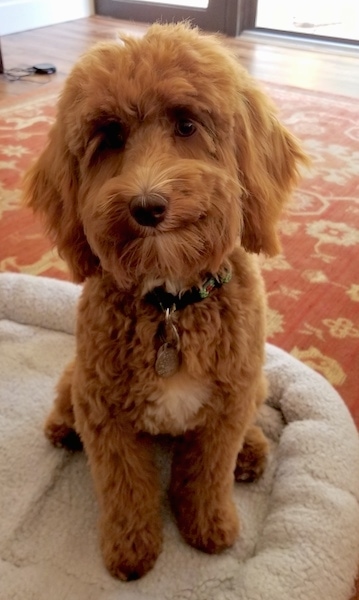
"Nina the Australian Labradoodle at 8 months old. Nina is very expressive! She's vocal, loves to cuddle and is always wagging her tail."
Note: there are three different types of Labradoodles currently being bred: the Australian Labradoodle bred in Australia, the Australian Labradoodle bred in the USA and the American Labradoodle.
The dogs pictured in this info section are the Australian Labradoodles bred in Australia, with the goal of creating purebred dogs. When contacting a breeder selling Australian Labradoodles, be sure to ask what type of Labradoodle they have.
Click here for the Australian Labradoodle Standard for dogs being bred by clubs in the country of Australia.
The Australian Labradoodle is good with children and is easy to train. It gets along well with other dogs. It is extremely clever, sociable and joyful, and quick to learn unusual or special tasks. Active, a little comical at times, it can attempt to outsmart its owner if undisciplined. It is very important that you are this dog’s firm but calm, consistent pack leader and provide him with daily mental and physical exercise to avoid behavior issues. Friendly, though obviously loyal to its own family, this dog is non-aggressive.
Standard: Height 22 - 24 inches (53 - 60 cm)
Standard: Weight Females 45 - 60 pounds (20 - 27 kg) Males 55 - 77 pounds (25 - 35 kg)
Miniature: Height 17 - 22 inches (44 - 56 cm)
Miniature: Weight 30 - 50 pounds (14 - 25 kg); males are larger.
HD, PRA, VonWilabrands, elbow and patella disorders.
The Australian Labradoodle will do okay in an apartment if it gets enough exercise. They are moderately active indoors and will do best with at least an average-sized yard.
This breed needs a lot of exercise, which includes long daily walks.
About 13-15 years
About 4 to 10 puppies, average of 8
Curly coats need regular grooming with a slicker brush at least every two weeks and maybe two to three times a year, a trim, scissoring or clipping to keep tidy. Most Australian Labradoodles shed little to no hair and are possibly non-allergenic.
This classic example of logical and planned crossbreeding was created in the country of Australia in the 1980s. The goal of the Australian clubs is to create a new "breed" with the best attributes of the original breeds. Wally Conron's objective was to produce assistance dogs that do not shed hair (for people with allergies). Australian Labradoodle guide dogs have been successfully trained and placed in Australia and Hawaii, but as yet the non-shedding characteristic of the Standard Poodle has not become a fixed a tribute. The Australian Labradoodle started out as a simple cross between the Labrador Retriever and Standard Poodle or Miniature Poodle and is still widely the case in North America. Australians, on the other hand, have taken the Labradoodle a few steps further. In mid-2004 it was announced that the Australian Labradoodle was not just a Labrador x Poodle cross but was a breed in its own right developed over many years with particular goals in mind. To accomplish these goals, further development was done with parent breed infusions added to the already blooming Labrador x Poodle cross lines. The developers of the breed sought out the best way in which to compliment the Australian Labradoodle breed, and to develop the qualities that they find and love in these dogs. In 1997 the very first Australian Labradoodle Breed Standard was written which reflected these goals. The Australian Labradoodle currently consists of 6 different breeds in its origin. The confirmed and approved parent breeds of the Australian Labradoodle are the Poodle (Standard, Miniature, Toy, Labrador Retriever, Irish Water Spaniel, Curly Coat Retriever, American Cocker Spaniel and English Cocker Spaniel.
*
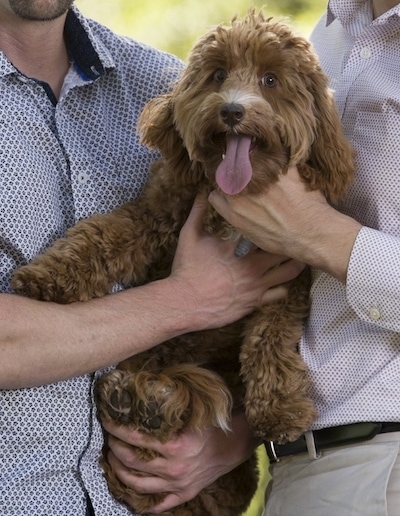
"Nina's a medium to small Australian Labradoodle. She's now 8 months old. She's very smart, loving, very rarely barks, and is super expressive."
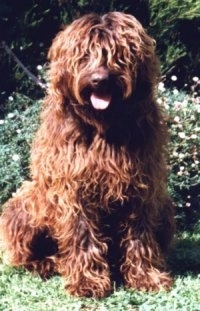
Photo courtesy of Tegan Park Labradoodle Breeding and Research Centre
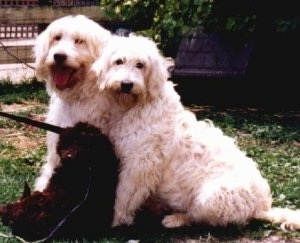
Australian Labradoodles, photo courtesy of Tegan Park Labradoodle Breeding and Research Centre, Yarragon, Australia
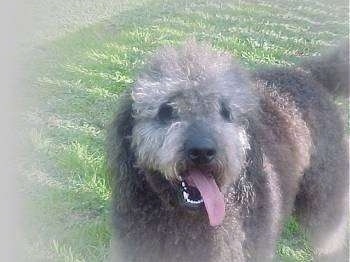
Photo courtesy of Rutland Manor Labradoodles
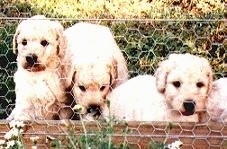
Photo courtesy of Tegan Park Labradoodle Breeding and Research Centre, Yarragon, Australia
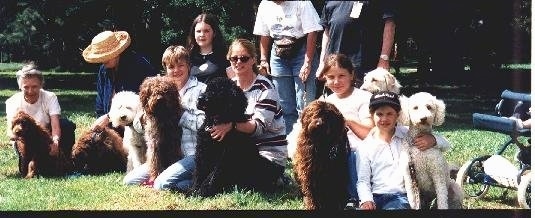
Photo courtesy of Tegan Park Labradoodle Breeding and Research Center, Yarragon, Australia
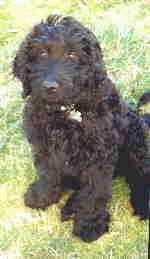
This is Zeb. He came all the way from Rutland Manor in Australia to the USA.
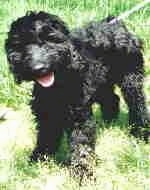
Zeb the Australian Labradoodle
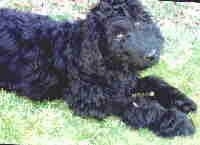
Zeb the Australian Labradoodle
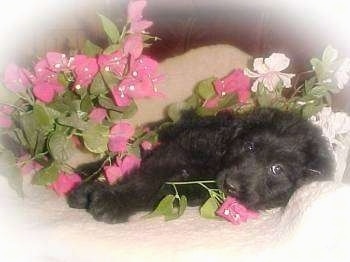
Photo courtesy of Rutland Manor Labradoodles, breeder

Photo courtesy of Rutland Manor Labradoodles, breeder
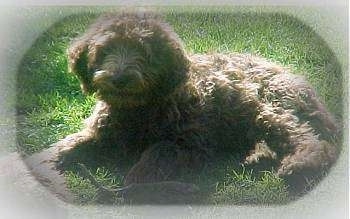
Photo courtesy of Rutland Manor Labradoodles, breeder
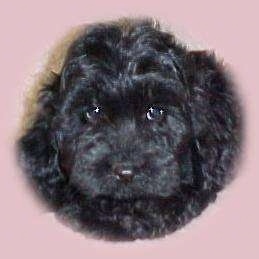
Photo courtesy of Rutland Manor Labradoodles, breeder
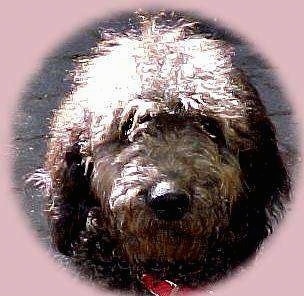
Photo courtesy of Rutland Manor Labradoodles, breeder

Photo courtesy of Rutland Manor Labradoodles, breeder